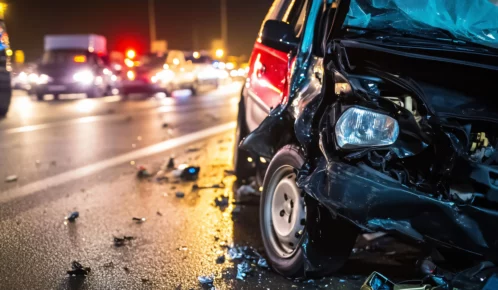In 2013, a total of 4,381 motorcycle riders died in crashes across the country. The most common type of fatality in a motorcycle accident is a head injury. Wearing a helmet reduces the risk of brain injuries by 67 percent and death by 37 percent. While the number of deaths is less now than in the 1980s, mandating that riders wear a helmet would reduce this number further. Illinois helmet laws do not currently mandate riders to wear helmets.
Table of Contents
In Illinois, motorcycle crashes account for just 1.5 percent of the total number of crashes in the state, yet 16.7 percent of the fatal crashes in the state involve motorcycles. This is significantly lower than the 9.1 percent for those crashes involving tractor-trailers. These statistics show the risk involved to motorcyclists. When a motorcycle accident occurs, the risk of serious injury or death is far higher because of the lack of protection and open design of a motorcycle. In fact, the Insurance Institute for Highway Safety Highway Loss Data Institute indicates that the number of deaths on motorcycles is over 26 times the number of deaths in cars based on miles traveled.
In 1967, the federal government tied the funding of safety programs and construction projects to mandatory state helmet laws. California was the only state that refused to comply. In 1970 the Illinois Supreme Court repealed its helmet law. Since then, proposed legislation mandating helmet use has failed many times.
What Illinois Helmet Law Requires
Illinois does not require cyclists to wear a helmet. It does, however, require that riders wear eye protection, which can be as simple as shatterproof sunglasses, a windshield, or windscreen. Illinois joins Iowa and New Hampshire as the only states without a helmet law of any sort.
Potential Risk of Riding Without a Helmet
The Illinois Department of Transportation did an observational survey in 2014 to see how many riders wore helmets. The study found that the city of Chicago had a lower helmet use rate than the state as a whole. In Chicago, just 37.8 percent of riders seen with helmets, compared to 44 percent in the entire state. Chicago riders appear to enjoy the freedom of helmet-less riding, but it comes at a risk.
According to the Center for Disease Control, 42 percent of the motorcyclists killed in 2010 were not wearing a helmet. That same year, 1,500 lives were saved because riders were wearing helmets. States mandating helmet use save eight times as many lives per 100,000 motorcycle registrations than those states who do not. Riding without a helmet may be legal, but it is riskier, and that risk sends many to ask for help from a Chicago personal injury attorney.
While the risk of injury is higher without a helmet, the risk of liability in a crash is not. Because Chicago does not require helmet use, lack of a helmet cannot increase the rider’s liability in an accident. If a motorcycle rider is injured in a crash, an experienced Chicago personal injury attorney will help determine who is at fault. If the other driver is at fault, that driver is held fully liable for the injuries, regardless of severity.
Safety Courses Can Help Limit Risk
Riders who want to limit risk can choose to wear a helmet, even though it is not required. Learning how to safely ride a motorcycle can also help drivers and riders stay safe.
The Illinois Department of Transportation runs a campaign to encourage drivers to see motorcycles and riders to be safe on the road. This campaign includes the free Cycle Rider Safety Training Program, which gives any Illinois resident with a valid driver’s license or permit the chance to learn more about motorcycles, riding and sharing the road with riders. The program is tiered based on cyclist or motorist experience, offering courses for beginners, intermediate riders and advanced riders. The Cycle Rider Safety Training Program recommends that riders and their passengers use helmets in spite of the state’s law.
Limiting Risk on Motorcycles
Cyclists who ride in Chicago can limit their risk of injury or death in several ways, including:
- Wearing a helmet.
- Taking Cycle Rider Safety Training classes.
- Asking passengers to wear helmets.
- Following posted speed limits.
- Avoiding aggressive driving.
- Keeping space between the rider and other vehicles while riding.
- Practicing a 2 to 4 second distance when following another vehicle.
While using a helmet, attending safety classes and riding cautiously can reduce serious injuries and fatalities, riders cannot control other drivers and hazards on the road. Accidents involving motorcycles will still happen, and the consequences are often devastating. A Chicago personal injury attorney can provide help with getting through the days following a motorcycle accident, allowing riders to seek full pay for their injuries regardless of helmet use.



